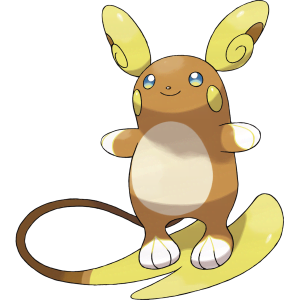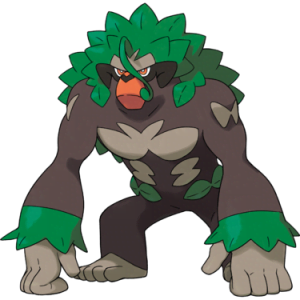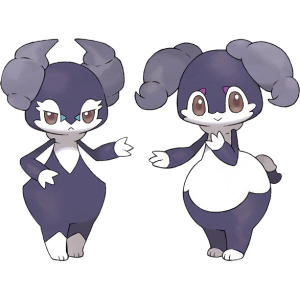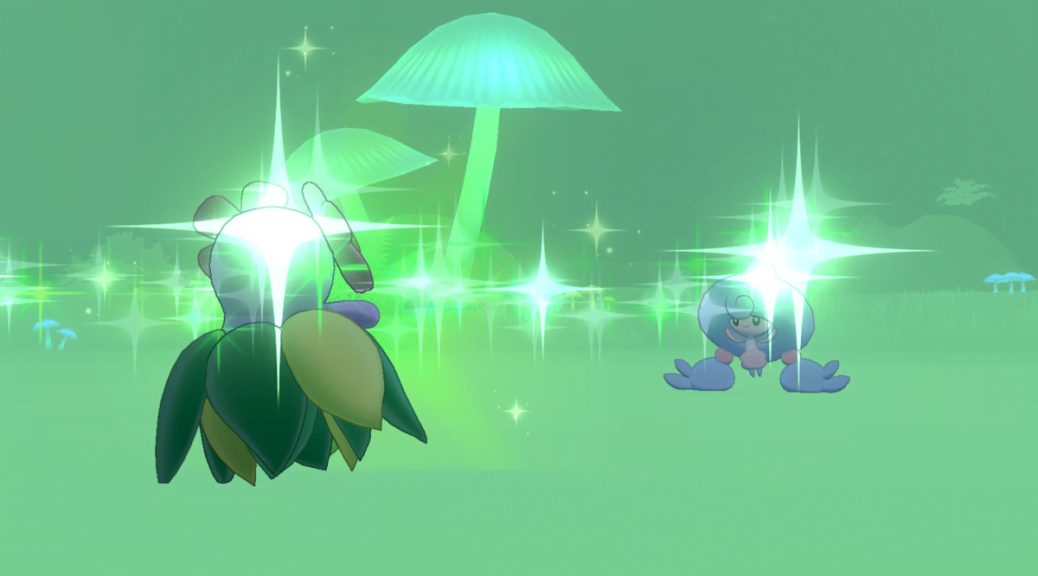Competitive Concepts: Terrain
We’ve discussed weather, now let’s look at how terrain is shaping competitive Pokémon metagames.
Much like the weather effects discussed in the previous Competitive Concepts, terrains are a battlefield condition that alter the battlefield – generally in favour of the person who set the terrain to begin with. Terrain was originally introduced in Generation VI and has been gradually expanded on through the seventh and eighth generations. Terrain was specially prominent during Generation VII on account of the Tapu’s significant places in competitive Pokémon.
Although not yet a fixture of the same prestige as weather, the impact of terrain on competitive metagames cannot be denied and it will likely only become more prominent in the future.
Electric Terrain
Electric Terrain can be created by the move of the same name, Max Lightning, or the Ability Electric Surge. Naturally, it is primarily synergistic with the Electric type, but its benefits could prove helpful to Pokémon of any type.
While Electric Terrain is active on the field, the Electric moves of a grounded Pokémon are 30% more powerful. Additionally, Electric Terrain has the property of preventing Sleep and Yawn. Although this does not wake up already Sleeping Pokémon, it does prevent those that are already Drowsy because of Yawn from falling asleep.
Electric Terrain also activates additional effects of certain moves. It causes Nature Power to become Thunderbolt when selected and Secret Power gains a chance of causing Paralysis. Additionally, Electric Terrain doubles the power of Rising Voltage and Terrain Pulse, the latter also becoming an Electric type move. When Camouflage is used during Electric Terrain’s presence on the field, the user becomes the Electric type. This terrain also triggers Alolan Raichu’s Surge Surfer, doubling its Speed. The Electric Seed item is activated by Electric Terrain, causing the holder to gain a boost to their Defence stat upon first switching into the terrain.
While Electric Terrain’s ability to prevent Sleep is certainly not unhelpful, its biggest boon is definitely the boost it provides to Electric moves. Electric type Pokémon are typically frailer sweepers with higher Speed and offensive stats on average, thus they appreciate the extra power to their STAB moves making it even easier to sweep. Thunderbolt is also an extremely common coverage move, so many non-Electric types also appreciate its use.
Unfortunately, Electric Terrain is difficult to set up with much consistency in the current generation with Tapu Koko’s current absence from play. The Electric Terrain move is typically wasted space on a moveset and the only Pokémon that currently has access to the Electric Surge Ability is Pincurchin, which isn’t particularly useful outside the Monotype meta. In Ubers or VGC, there is the option of utilising Max Lightning from a Dynamaxed Pokémon, but this is not a consistent method of setting up the terrain as Max Lightning is only available for three turns of the game. For this reason, Electric Terrain is potentially quite useful to your team, but you shouldn’t plan a team around it in most metagames. This is especially true in most Smogon metagames on account of the Sleep Clause.
Best Setter: Pincurchin
Best Abuser: Alolan Raichu
Misty Terrain
Misty Terrain can be set via its eponymous move, Max Starfall or the Misty Surge Ability. While it is primarily assciated with the Fairy type, it has the distinction of being the only terrain that does not benefit any on type more than another, as it lacks the effect of boosting the power of moves that share its type.
Misty Terrain, on paper, arguably has the most powerful effect of all terrain: it prevents grounded Pokémon from being afflicted by any non-volatile status condition or becoming confused. It also has the additional benefit of halving the power of Dragon moves, even if the user of the move is not otherwise affected by the terrain.
Misty Terrain, like all terrain, causes additional effects in various moves. When Misty Terrain is active; Nature Power becomes Moonblast, Secret Power will potentially lower the target’s Special Attack and Camouflage causes the user to become the Fairy type. It also increases the power of Misty Explosion by 50% and doubles the power of Terrain Pulse. Additionally, if a Pokémon is carrying a Misty Seed when they switch into Misty Terrain, they will gain a one-time boost to their Special Defence.
 While Misty Terrain’s status-nullifying effect is extremely powerful, it shares a similar problem to Electric Terrain. With Tapu Fini currently unavailable, it is extremely hard to reliably set up. The move Misty Terrain is difficult to fit onto most movesets, making setting it that way unviable. Furthermore, the only currently available Pokémon with the Misty Surge Ability is Galarian Weezing, who would have to forgo Levitate to make use of it – an extremely risky choice for a Pokémon that is primarily a Poison type. This leaves setting Misty Terrain up with Max Starfall, which is not reliable as it requires Dynamaxing to achieve, something that is not even legal in most metagames. Unfortunately, there is currently just no way to reliably incorporate this terrain into teambuilding as it stands.
While Misty Terrain’s status-nullifying effect is extremely powerful, it shares a similar problem to Electric Terrain. With Tapu Fini currently unavailable, it is extremely hard to reliably set up. The move Misty Terrain is difficult to fit onto most movesets, making setting it that way unviable. Furthermore, the only currently available Pokémon with the Misty Surge Ability is Galarian Weezing, who would have to forgo Levitate to make use of it – an extremely risky choice for a Pokémon that is primarily a Poison type. This leaves setting Misty Terrain up with Max Starfall, which is not reliable as it requires Dynamaxing to achieve, something that is not even legal in most metagames. Unfortunately, there is currently just no way to reliably incorporate this terrain into teambuilding as it stands.
Best Setter: Anything with a Fairy move if you can Dynamax
Best Abuser: N/A
Grassy Terrain
Like other terrain, Grassy Terrain can be set with its eponymous move. It can also be set via Max Overgrowth or the Grassy Surge Ability. As its name suggests, Grassy Terrain is primarily associated with, and synergistic with, the Grass type.
This terrain provides passive recovery of 1/16th all grounded Pokémon’s max HP at the end of each turn. This is nice but, frankly, very lacklustre compared to the effects of other terrain moves. What is far more useful, is the 30% power boost it provides to Grass moves used by grounded Pokémon and a 50% power decrease to Bulldoze, Magnitude and (especially) the omnipresent Earthquake.
Grassy Terrain also has additional affects that effect certain moves, Abilities and items. Nature Power becomes Energy Ball when used on Grassy Terrain, Secret Power may cause Sleep and Camouflage causes the user to become Grass type. While Grassy Terrain is active, Terrain Pulse doubles in power and becomes a Grass move while Grassy Glide has its priority increased by one. When a Pokémon holding a Grassy Seed switches in during Grassy Terrain, its defence is increased by one stage. Grassy Terrain also triggers the Grass Pelt Ability.
Currently, Grassy Terrain is the best of the terrain options. While its recovery Ability is fairly lacklustre, the heavy nerf it gives Earthquake, a very powerful and very common move, is extremely potent and the 30% power boost to Grass moves can be very beneficial. This is especially true when combined with Grassy Glide, creating an extremely powerful (and nearly always STAB) priority move. Most importantly though, Grassy Terrain is reliable to set up, thanks to Rillaboom. While other terrain suffers because of the absence of the Tapus, Rillaboom provides a perfectly viable alternative to Tapu Bulu. It is a powerful wallbreaker that can set up Grassy Terrain every time it switches in while also benefiting tremendously from it thanks to the 30% power boost and its access to Grassy Glide.
While it isn’t necessary to build a team entirely around the use of Grassy Terrain, it is certainly possible thanks to having such a reliable setter, and even when not used with a dedicated terrain team, Grassy Terrain can prove immensely beneficial.
Best Setter: Rillaboom
Best Abuser: Rillaboom
Psychic Terrain
Psychic Terrain is also able to set by a move that shares its name, as well as by Max Mindstorm and the Psychic Surge Ability. In Generation VII and some Smogon metagames, it can also be set by Mew’s Genesis Supernova. Psychic Terrain is primarily associated with the Psychic type, but its effects can prove beneficial to one’s entire team.
Psychic Terrain has the interesting effect of protecting grounded Pokémon from being affected by moves with an increased priority. This includes moves that are affected by Prankster, Gale Wings or Triage but does not apply to most moves that affect multiple targets. Psychic Terrain, being primary related to the Psychic type, also increases the power of a grounded Pokémon’s Psychic moves by 30%.
Much like the previous forms of terrain, Psychic Terrain influences the effects of certain moves and can trigger a special seed item. In this case, Psychic Terrain converts Nature Power into Psychic, gives Secret Power a chance of lowering the Target’s Speed and causes Camouflage to make the user Psychic-typed. It also increases the power of Expanding Force from the standard 30% power boost to a 50% boost and allows it to hit all opposing Pokémon while Terrain Pulse becomes a Psychic move and has its power doubled. When a Pokémon holding a Psychic Seed first switches into this terrain, their Special Defence increases by one stage.
 Although not as viable as Grassy Terrain, Psychic Terrain is quite usable in several competitive metagames. In particular, it is quite useful in Smogon’s RU, UU and Monotype tiers. It also can potentially be viable when used in Doubles or VGC battles. This is, in part, due to its handy ability to protect from priority moves, reducing the chances of your opponent being able to revenge kill. However, like Grassy Terrain, it is more useful for the power increase it provides to certain moves and is more viable thanks to having a solid terrain setter in the form of male Indeedee. Although not as good a setter as the likes of Tapu Lele in Generation VII, or Rillaboom in Generation VIII metagames, male Indeedee become potent wallbreakers when on the terrain they set thanks to a combination of a reasonable Special Attack, Expanding Force, STAB and access to Choice Specs. Although physically frail and not as defensively inclined as female Indeedee, male Indeedee also have solid Special Defence allowing them to survive longer and re-set terrain as needed.
Although not as viable as Grassy Terrain, Psychic Terrain is quite usable in several competitive metagames. In particular, it is quite useful in Smogon’s RU, UU and Monotype tiers. It also can potentially be viable when used in Doubles or VGC battles. This is, in part, due to its handy ability to protect from priority moves, reducing the chances of your opponent being able to revenge kill. However, like Grassy Terrain, it is more useful for the power increase it provides to certain moves and is more viable thanks to having a solid terrain setter in the form of male Indeedee. Although not as good a setter as the likes of Tapu Lele in Generation VII, or Rillaboom in Generation VIII metagames, male Indeedee become potent wallbreakers when on the terrain they set thanks to a combination of a reasonable Special Attack, Expanding Force, STAB and access to Choice Specs. Although physically frail and not as defensively inclined as female Indeedee, male Indeedee also have solid Special Defence allowing them to survive longer and re-set terrain as needed.
Best Setter: Indeedee
Best Abuser: Indeedee
Terrain and Weather
Terrain and weather are extremely similar aspects of Pokémon and function more or less the same, down to Abilities that automatically alter the battlefield conditions, items that extend the effect’s duration and certain moves and Abilities that gain additional bonuses based on the presence of a certain weather or terrain. The only major difference is that terrain primarily effects only grounded Pokémon while weather is more all-encompassing.
What is interesting about this, is that it is theoretically possible to combine weather and terrain to make some interesting combinations. In reality though, it’s actually quite difficult to make a team that combines both. Weather and terrain are focused on different types and relate better to different playstyles and it’s hard to fit in setters and abusers for both.
The only real exception to this, at a stretch, is Rain and Electric Terrain. Primarily, this is because Rain boosts the Accuracy of Thunder, which in turn receives a power boost from Electric Terrain. Rain also has the same effect on Hurricane, which is powerful against Grass types, which resist Electric moves. This all being said, this strategy was never meta-defining and because of the current absence of Tapu Koko, the only Electric Terrain setter who was fast and powerful enough to really make this work, it is still inadvisable to attempt. It could possibly work in a doubles environment, but there are much for reliable and viable strategies that can be put to use there.
As it stands, even though there is some degree of synergy between Rain and Electric terrain, you’re generally better off building a team based around one or the other and, of the two, you’re better off building a weather team as terrain still lacks the kind of presence and support to make it viable as a dedicated play style.
Counterplay
Like weather, counterplay options for terrain are somewhat limited. Thankfully though, there are a few more options available to you. First and foremost, as with weather, one of the simplest and easiest methods for removing terrain is just to replace it with some of your own. Unlike with weather though, terrain setters are not particular prevalent in most metagames, which limits the availability of this strategy.
Unlike with weather though, several moves also have effects that remove terrain. Steel Roller is a powerful move that can only be activated on a battlefield with a terrain present and removes that terrain when used. Unfortunately, because it can only be used on terrain, Steel Roller is highly situational and not really viable in a competitive setting. G-Max Wind Rage is an option if you use Corviknight in a meta where Dynamax is legal. Similarly, Lycanroc-Dusk’s Splintered Stormshard can also remove terrain in a metagame where Z-moves are usable. Very few metagames allow either Dynamax or Z-moves as it is though.
The last move that can remove terrain is both quite widespread and easy to fit onto a team: Defog. In fact, as it is also one of the primary methods of removing entry hazards, a great number of teams come with a ready-built counter to terrains already in their lineup without needing to actively consider terrain at all.
The final method of countering terrain, and arguably the most effective, is to take out the Pokémon responsible for setting the terrain causing you problems. This can be easier said than done, of course, but it does make for a more permanent solution.
Conclusion
 Like weather, terrain can turn the tide of battle in the favour of whoever sets it. While it is much newer than weather as part of the game, with each passing generation of Pokémon it is becoming a more prominent part of competitive play. Right now, terrain is useful, but unarguably inferior to weather from the perspective of using it as a dedicated play style and also much easier to counter.
Like weather, terrain can turn the tide of battle in the favour of whoever sets it. While it is much newer than weather as part of the game, with each passing generation of Pokémon it is becoming a more prominent part of competitive play. Right now, terrain is useful, but unarguably inferior to weather from the perspective of using it as a dedicated play style and also much easier to counter.
Still, this is just the beginning for terrain: with the Tapus likely returning in the Crown Tundra DLC, we will likely see a greater increase in the presence of terrain-focused teams with the return of the game’s most powerful terrain setters. Additionally, further support is bound to emerge in future generations. Right now, terrain looks like it has a bright future ahead of it.
Edited by bobandbill and Ranko.
